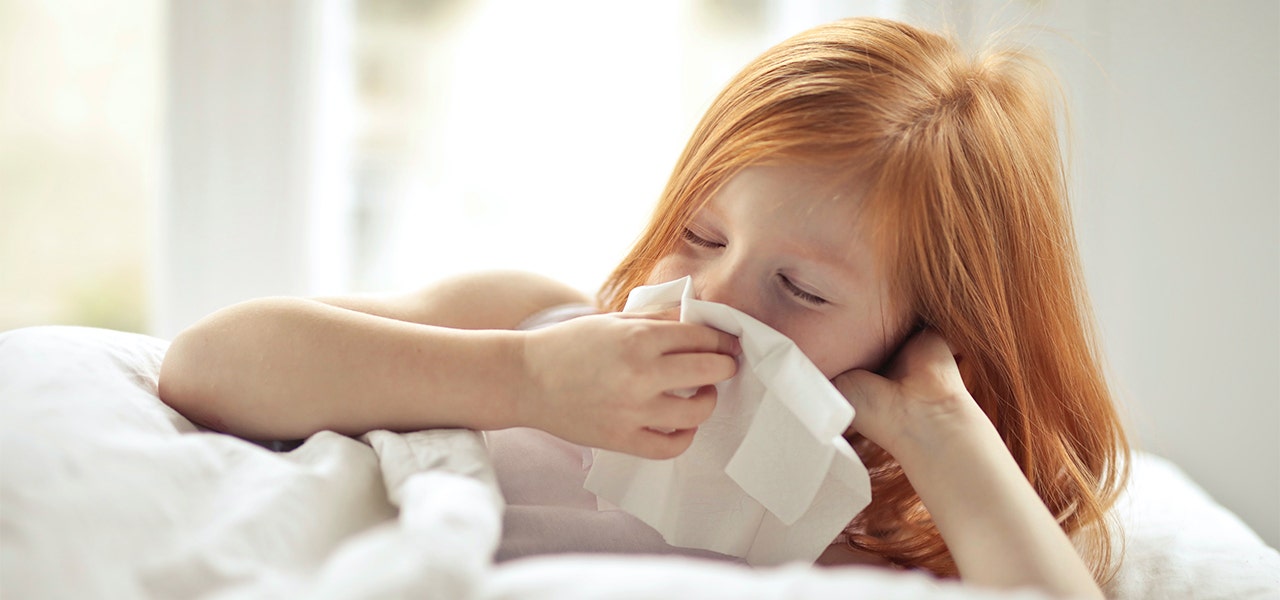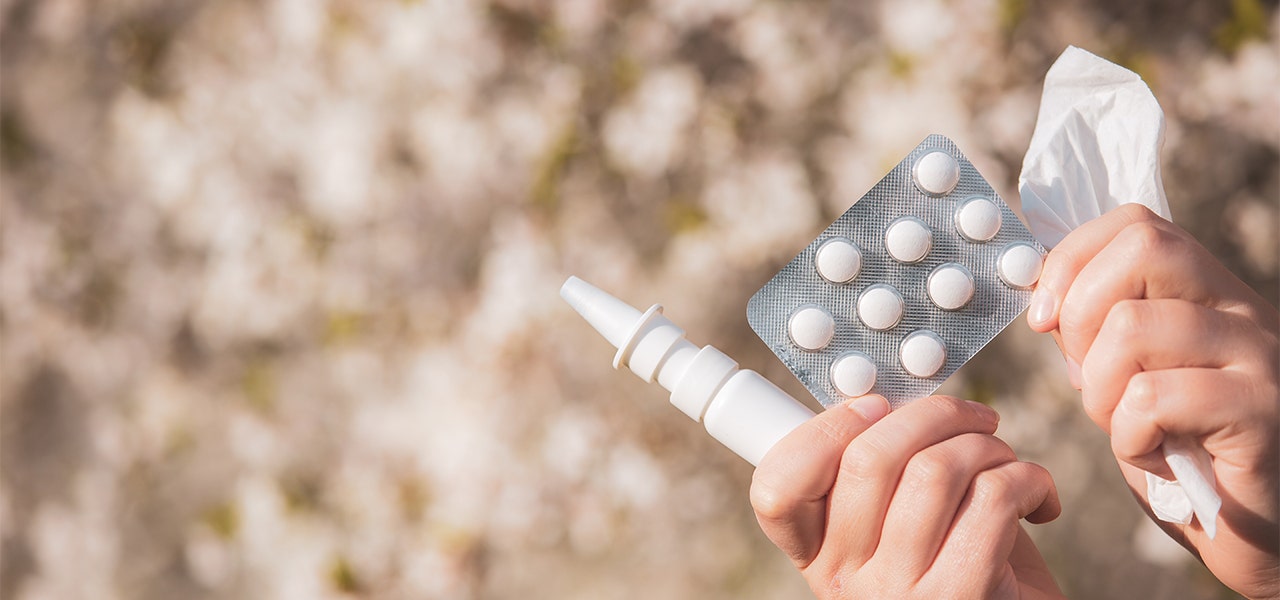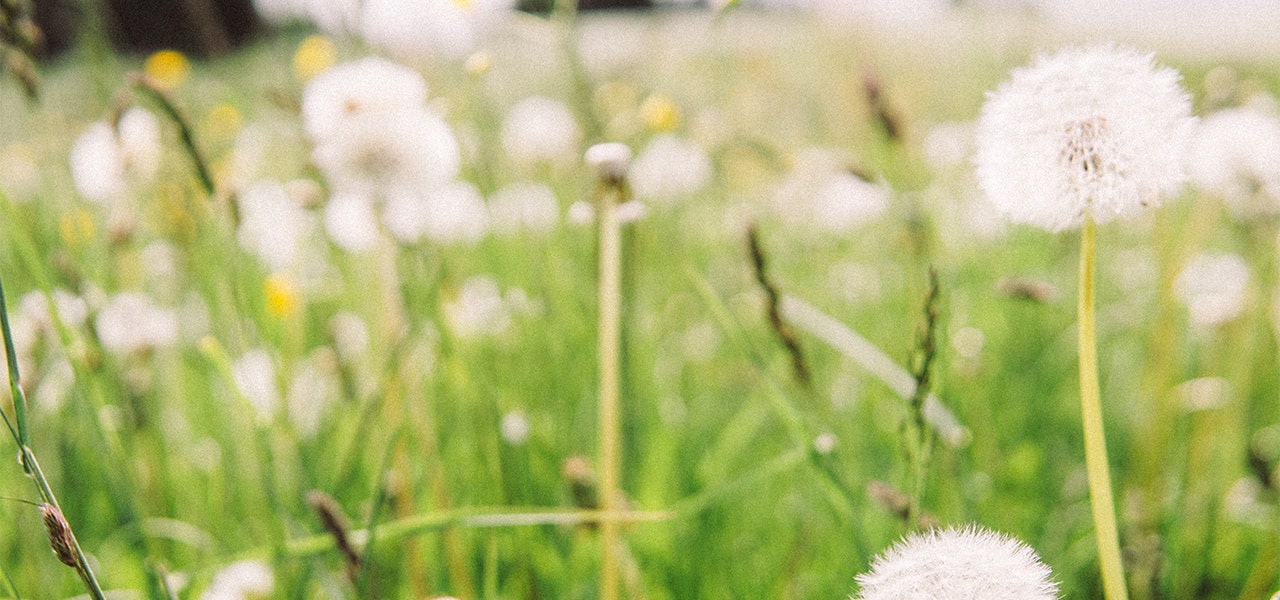We’re happy to welcome back Dr. Arthur Lavin to the blog! You can hear more from Dr. Lavin on the ParentTalk Podcast.
Every spring we thrill to see the flowers bloom, the leaves unfold, and the lawns grow rich with green. But for a whopping 25% of U.S. adults and 20% of our children, the burst of pollen brings real misery to the eyes, noses, throat and lungs.
We live in an era of increased awareness that what we eat and breathe can harm or irritate us. Pollution can damage lungs and brains, gluten can cause intestinal upset, latex can trigger mild to severe symptoms, and the list goes on. But the trouble caused by spring allergies is a very specific problem.
What is an allergy, why does pollen cause so much trouble and what can be done? With spring allergy season in full swing, it’s the perfect time to discuss spring allergies and how to manage them.
What Are Spring Allergies?
The word “allergy” comes from the Greek allo for “other” and “ergy” for “energy.” The “other energy” in an allergy refers to the interaction of some protein in our air or food and our immune system. For spring allergies, that protein is found on pollen.
In terms of the immune system, allergies are determined by: the antibody and the mast cell. Antibodies are Y-shaped molecules where the fork of the Y situates such that only one specific protein will fit and activate that antibody. So, if your child is part of the 1 in 5 whose antibody cells include those that exactly fit the protein on a pollen, they are allergic to that pollen.
The other key element is the mast cell, which carries the antibody. When the protein that matches that antibody clicks into the fork of its Y, the mast cell spews out a spray of chemicals, the most familiar of which is histamine – a fierce activator of all the itch nerves.
Spring Allergy Symptoms


What happens when histamine is released? Your child experiences all the familiar complaints of spring allergies. Common symptoms include:
- Runny, itchy nose
- Red, itchy eyes
- Sore throat
- Dry cough
- Wheezing
These are the very common symptoms of spring allergies. However, just because they are common doesn't mean that these symptoms can’t be miserable or even debilitating.
The Most Common Pollens to Blame
We tend to think of flowers when we think of pollen. But, flowers are totally overpowered by grass and trees in terms of spring allergies. The yellow pollen dusting we see on our cars is not from flowers but from the grass and trees that surround us.
There are several species of grass and many types of trees, each making their own pollen, and in turn triggering allergies to oak, bluegrass, ragweed, etc. Whatever your child’s antibody can connect to in order to activate their mast cells, that’s the only specie(s) of pollen that they are allergic to. And, that decides when in the season your child will be sneezing.
How to Diagnose Spring Allergies
There are three tests to decide if your child has spring allergies. Two require an allergist:
- Skin test – Scratching various pollen proteins under the skin and monitoring histamine release.
- Blood test – Checking for antibodies to various pollens in the blood.
These tests are helpful indicators, but they deliver many false positives and negatives. If your child’s skin and blood test are negative, but every spring they get itchy, sneezy, drippy nose and eyes that stop with allergy meds, your kid has spring allergies.
This brings us to the third way to diagnose spring allergies: simply see what happens every spring when pollens flood our air and see if allergy-specific treatments work!
4 Types of Allergy Treatments


With food allergies, stop eating the food and allergy troubles go away. No such luck with pollen. If your child has spring allergies, what can you do? Most people find relief with some combination of these options:
1. Antihistamines
Essentially, antihistamines do just what they say – block histamine, the main chemical that makes the allergic reaction happen. Antihistamines can be delivered as:
- Oral medication – The three top picks are Claritin (loratadine), Zyrtec (cetirizine) and Allegra (fexofenadine). Another is Benadryl (diphenhydramine). The top three last 24 hours and do not typically sedate. Benadryl lasts 4 hours and does sedate, but is far more powerful, making it useful for occasional very bad bouts.
- Eye drops – Over-the-counter antihistamines eye drops are highly effective for itchy eyes, delivering powerful and nearly immediate relief to most. And, they are safe since the drug remains in the tears, never in the body.
- Nasal spray – This can be helpful when oral antihistamines fail to provide relief to the nose.
2. Steroids
Steroids like prednisone and budesonide work by killing the mast cells and immune cells that make the allergy-related class of antibody, meaning they basically shut down the allergy cellular infrastructure. Sadly, using steroids for more than a few weeks can lead to very severe side effects, so it is not an option for extended periods of time. But this category of drug is highly useful short-term and available as:
- Oral medication
- Nasal steroid sprays
- Inhalant steroids
- Eye drops
- IV steroids
3. Antileukotrienes
Most people know about antihistamines, but histamine is not the only chemical released by mast cells to cause spring allergies. Another big category are the leukotrienes, and Singulair (monteleukast) works very well to manage allergies. It’s used mainly as an oral pill and has very few side effects.
4. Allergy Shots
More formally known as allergy immunotherapy, this is the only therapy in wide use that might offer permanent relief. The idea is that by injecting the pollen you are allergic to, the body makes a class of antibody that binds to it and clears it away before your immune system creates the allergic reaction.
This approach does involve weekly injections and you may not know the results for months, even years. So, we almost always start with oral antihistamines, go on to topical steroids and montelukast, before recommending allergy shots.
There are also new immunotherapies, like Xolair (olamizulab), emerging that aim to fully neutralize the whole allergy system. However, since it affects an entire arm of the immune system, is wildly expensive and is an injection, this is the last resort.
Dr. Lavin’s Bottom Lines on Spring Allergies


- About 25% of adults and 20% of kids in America have allergies, and spring is a very active time for them.
- An allergy is an interaction between some protein (found on pollen for spring allergies) from outside the body and the immune system in the body.
- When the thing you are allergic to touches your body, your immune system releases histamine, leukotrienes and other chemicals that cause your tissue to itch, leak fluid and swell up.
- Common allergy symptoms include itchy runny nose, swollen itchy eyes, sore throat, dry cough and wheezing.
- Allergies can be diagnosed by a skin or blood test from an allergist or you can do the “what happens if you are exposed” test.
- Most spring allergies can be very well managed with the extraordinary antihistamine medicines now available over the counter. There are also very effective anti-leukotrienes.
- For severe spring allergies that cannot be controlled by the above remedies, we resort to a short course of oral steroid or use of weekly allergy shots. Most recently injected antibodies against the antibodies that make allergies happen have been developed for qualifying cases.
- Spring allergies are terribly common and aggravating. But help is available! Be sure to check with your pediatrician if you need help sorting through the options to find your path to your child’s best comfort.
 BABY
BABY  KIDS
KIDS  ADULT
ADULT  LEARN
LEARN  STORES
STORES 


